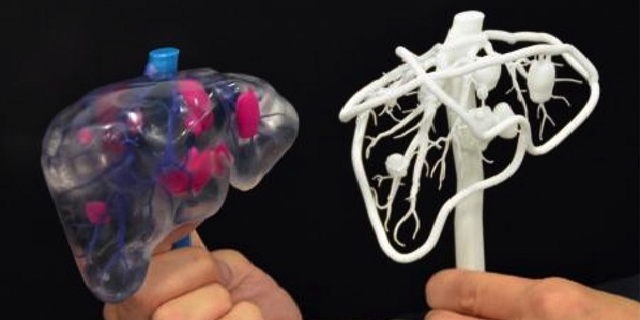 What amazes me the most about 3D printing is just how rapidly the technology is being adopted and how advanced the printing process has become over the last two to three years. There are few industries, if any, which have realized the benefit of 3D printing as much as the medical industry. Every week we stumble upon new, innovative ways in which 3D printing can be used to either help save the life of an individual, or at least make it more fulfilling.
What amazes me the most about 3D printing is just how rapidly the technology is being adopted and how advanced the printing process has become over the last two to three years. There are few industries, if any, which have realized the benefit of 3D printing as much as the medical industry. Every week we stumble upon new, innovative ways in which 3D printing can be used to either help save the life of an individual, or at least make it more fulfilling.
One application which has seen exponential adoption within hospitals and surgical centers around the world, is that of 3D printed medical models. By using CT scan and MRI data researchers and doctors are able to fabricate near-replicas of a patient’s internal organ structure, allowing them to practice complicated procedures on a ‘dummy’ organ prior to moving on to the actual surgery. Additionally, these models allow surgeons to better understand just what a particular surgery will require from them, much better than a 3D image on a computer monitor can.
Recently, researchers at the University of Tsukuba, one of Japan’s oldest national universities, located in Tsukuba, Ibaraki Prefecture, and Dai Nippon Printing Company have developed a method of printing patient specific 3D models of the human liver. As we’ve mentioned above, we’ve all seen 3D printed medical models of organs before, but these models are much more than just that. Using multiple materials within the printing process, including a clear polymer to mimic the main organ’s tissue, and red and blue polymer to represent the arteries and the veins within the organ, researchers have been able to produce an incredibly accurate model.
Price is certainly an aspect of these models researchers are looking to reduce, so they’ve recently turned to exploring ways in which they can cut the production costs of such models significantly. To do this, they’ve cut back on the total amount of polymer required and created an open-air 3D print of the same liver. As you can see in the image above, the new liver model uses only one type of resin, but is able to convey the same information as the more complicated multi-resin liver. They have thus been able to reduce the total cost of creating such models by 66% to approximately 300,000 to 400,000 yen ($2500 – $3300).
“We have tested these products with patients and the results are incredible,” explained a University of Tsukuba researcher. “Its easy to understand I think why this technology is such an attractive medical service, but also beneficial to the training of young doctors.”
While they have not used these new models for any specific surgery quite yet, they have used them extensively while training soon-to-be doctors. The university looks to bring the new liver models into the surgical arena sometime next year and is already working on other organs such as the pancreas.
Certainly these models could significantly reduce the overhead that any hospital or surgical center has to deal with. A reduction in price from around $10,000 to under $3300 would ultimately be passed on to the patient, which none can argue is a bad thing.
Let us know your thoughts on these affordable medical models coming out of Japan. Discuss in the 3D Printed Medical Model forum thread on 3DPB.com.
Subscribe to Our Email Newsletter
Stay up-to-date on all the latest news from the 3D printing industry and receive information and offers from third party vendors.
You May Also Like
Profiling a Construction 3D Printing Pioneer: US Army Corps of Engineers’ Megan Kreiger
The world of construction 3D printing is still so new that the true experts can probably be counted on two hands. Among them is Megan Kreiger, Portfolio Manager of Additive...
US Army Corps of Engineers Taps Lincoln Electric & Eaton for Largest 3D Printed US Civil Works Part
The Soo Locks sit on the US-Canadian border, enabling maritime travel between Lake Superior and Lake Huron, from which ships can reach the rest of the Great Lakes. Crafts carrying...
Construction 3D Printing CEO Reflects on Being Female in Construction
Natalie Wadley, CEO of ChangeMaker3D, could hear the words of her daughter sitting next to her resounding in her head. “Mum, MUM, you’ve won!” Wadley had just won the prestigious...
1Print to Commercialize 3D Printed Coastal Resilience Solutions
1Print, a company that specializes in deploying additive construction (AC) for infrastructure projects, has entered an agreement with the University of Miami (UM) to accelerate commercialization of the SEAHIVE shoreline...






























